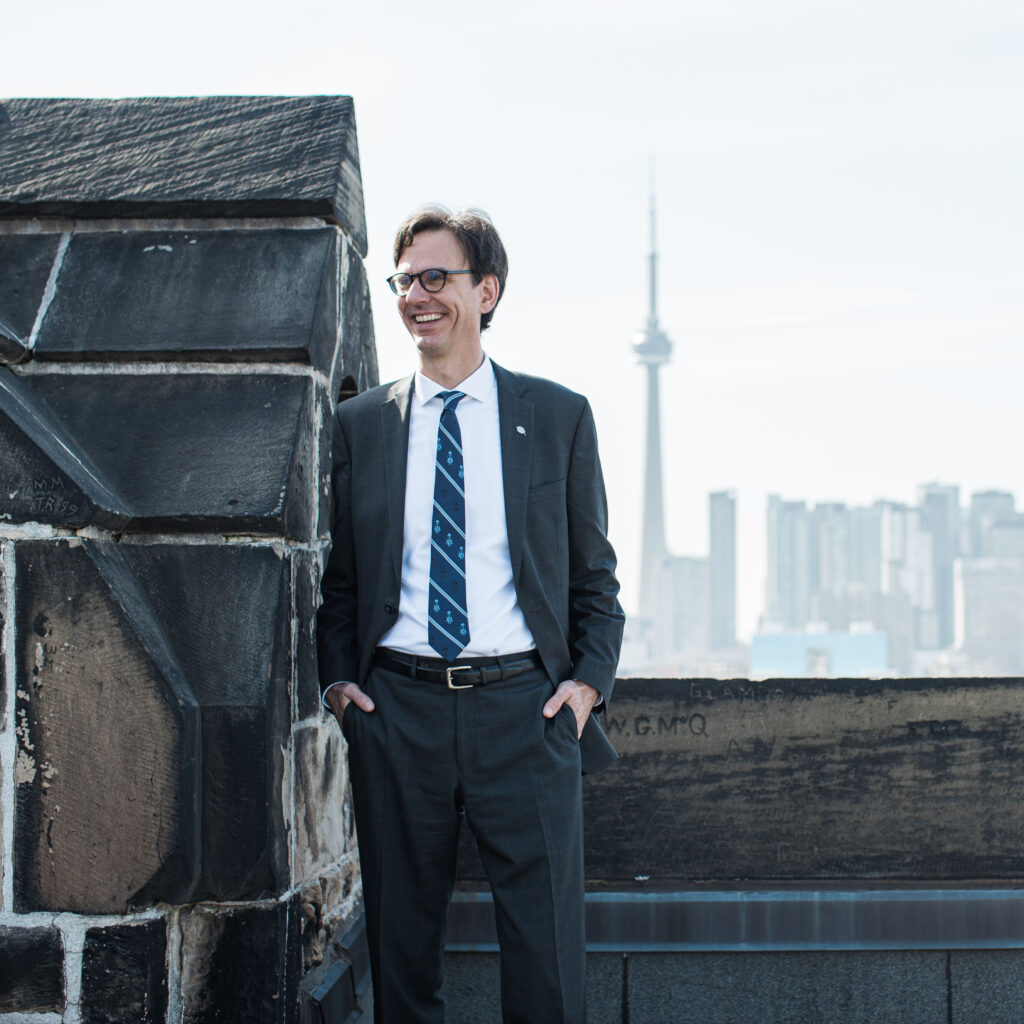What does the UTAA do?
It’s been working to strengthen the connection between alumni and the university since the 1840s. Today we’re a board of 14 directors whose focus is to encourage alumni participation in the life of the university and advance its interests. We do that through four broad baskets. The first covers awards, scholarships and events. The second is around constituency relationships and partnerships – our connections with alumni associations in divisions across all three campuses. The third focuses on fundraising and donations and the fourth concerns university governance.
We also have four standing committees: Equity, Diversity and Inclusion; Mentoring; the Nominating Committee; and the Soldiers’ Tower Committee.
The UTAA also supports U of T’s mission by coordinating alumni leaders from across the university’s many faculties, colleges and campuses. We come together through the Council of Presidents and ask questions like how are alumni associations pivoting in a post-pandemic world? We facilitate a transfer of knowledge across the community, which helps other associations connect with their alumni to make engagement instances more frequent and stronger.
As well, the UTAA believes that one of the values of getting involved with the university is that alumni can then become informed ambassadors for the university. They can then bring forward the university’s story in different personal or professional contexts. We try to be a conduit and facilitator of beneficial and inspiring U of T stories. This is a broader way that the UTAA is always adding value to our university.
What do you get out of volunteering?
Volunteering is a dual proposition for me. First, I get a lot of energy from connecting with and learning from fellow alumni as well as faculty, staff and students. I also get a sense of energy and renewal every time I visit campus. The other thing is, I like to marry quite closely my volunteer contributions – not only to the university but also my own personal and professional growth.
Volunteering is an investment in yourself but also exposes you to a wonderful network. You meet alumni from all sorts of careers and sectors. Also, our time at the university as students was successful in part because of other people. So, volunteering is an opportunity to pay it forward.
What excites you about the Defy Gravity campaign?
The alumni engagement goals! I’m excited about the transformative change that will come with inspiring 225,000 alumni to get involved as volunteers, mentors, donors, participants, and leaders and encouraging them to contribute their time and talent to the university one million times collectively.
Alumni communities are in all four corners of the globe. So, in addition to the university having a global footprint academically, we can match that by having a worldwide, engaged alumni community.
The $4-billion fundraising goal is also tremendously exciting. This will have an impact on the academic excellence front, for sure, but also on the places and spaces that will be built on all three campuses to advance collaboration and innovation.
Alumni want to be a part of this. They’re invested and interested in the next generation of talent coming out of the university and what the university is doing with its academic heft, both in terms of teaching excellence and helping to solve big societal challenges. And the campaign will play a role in that.
How does the UTAA support the alumni engagement goals?
Well, it’s wonderful to see the alumni engagement goal right up there with the fundraising goal and we’re supporting it on different levels and formats. For example, we work closely on Alumni Reunion, coming up from May 29 to June 2, with amazing programming across the three campuses. We also include our annual meeting for all alumni during the Saturday and, this year, we will be celebrating the 100th anniversary of Soldiers’ Tower, which will be a very significant event on the St. George campus.


